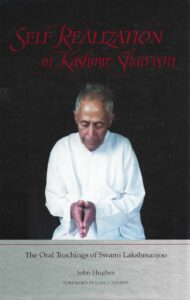Self Realization In Kasmir Shaivism
By John Hughes, Foreword by Lance Nelson.
139 Pages | Published in 1994 | Hardcover | State University of New York | ISBN: 0791421791.
The Oral Teachings of Swami Lakshmanjoo.
This book presents the oral teachings of the twentieth century's great Kashmir Shaivite master. The last of his long lineage, Swami Lakshmanjoo preserved, as did his precedessors, the oral knowledge that illuminates this ancient philosophy - that clarifies the often deliberately obscure tantric texts.
Swami Lakshmanjoo reveals the essence of the way and the means to self-realization. Here in his own original discourses, as well as in his English renderings of Abhinavagupta and Kshemarāja, he unveils the essential teachings of this yoga philosophy. He reveals the tantric understanding of the purpose and reason for creation. He offers instruction on the greatness and importance of the supreme mantra sauh. In his presentation of effective practice he explains why meditation is both effortless and, at the same time, difficult. In his discussion of discipline he clarifies why personal habits and dispositions play an important part in spiritual growth. Finally, in his unveiling of the path of Kundalini yoga, he is intent on exposing and thereby preserving this hidden elevated process while warning of its pitfalls.
From the Foreword (p. xxviii):
" Swami Lakshmanjoo traces his lineage back to the great Kashmir Śaiva polymath Abhinavagupta (tenth-eleventh centuries C.E.) and beyond. Śaivism had flourished in the Kashmir Valley for several centuries before the time of Abhinavagupta, and it continued to thrive for several hundred years after. The nondual Śaiva teaching was passed down through illustrious preceptors such as Somānanda (tenth century C.E,), his pupil Utpaladeva, and Utpaladeva's pupil Lakshmanagupta, who - as mentioned above - was one of Abhinavagupta's preceptors. Also worthy of mention are Kshemarāja (eleventh century), a disciple of Abhinavagupta, and Jayaratha (twelfth century), who commented on the great master's masterpiece, the tantrāloka. "
 Bezig met bijwerken...
Bezig met bijwerken...